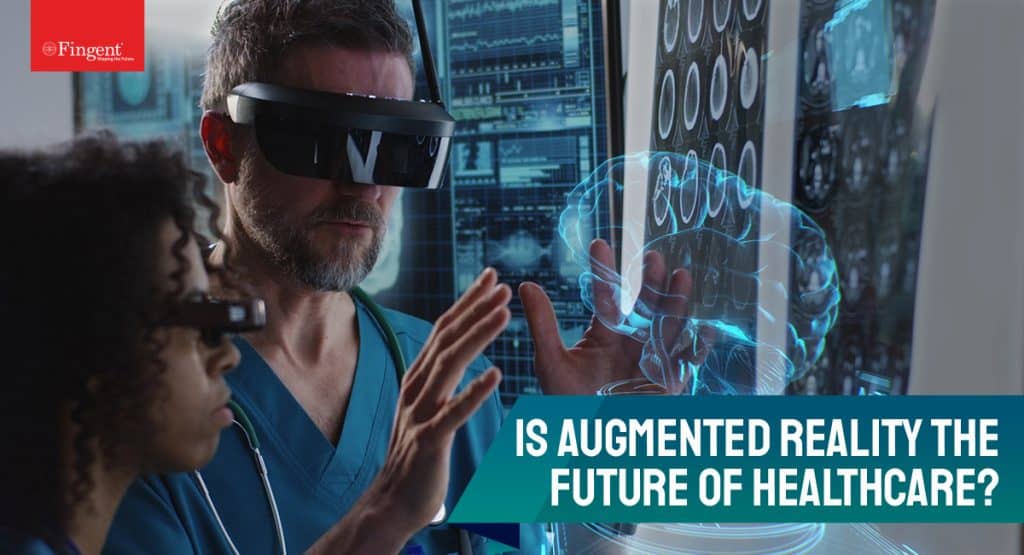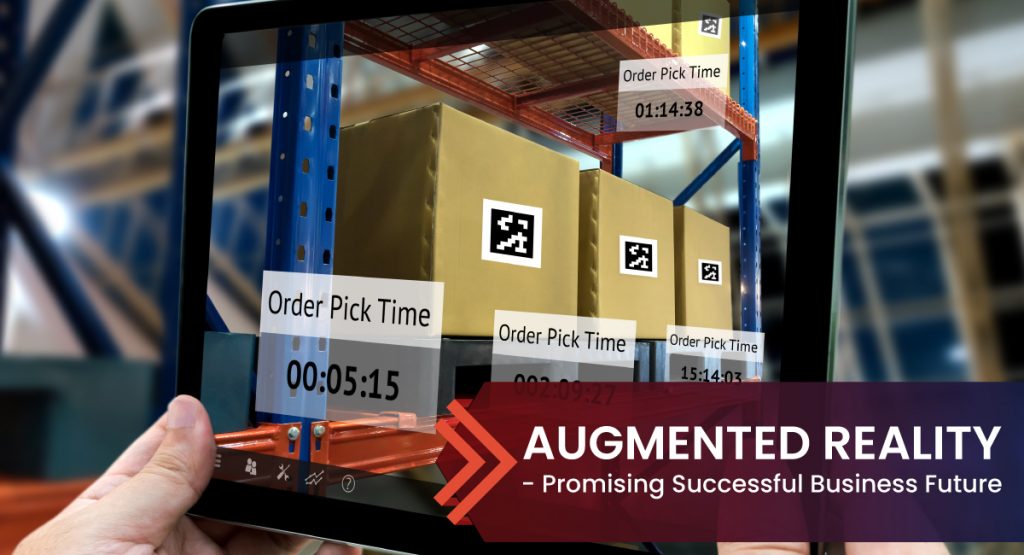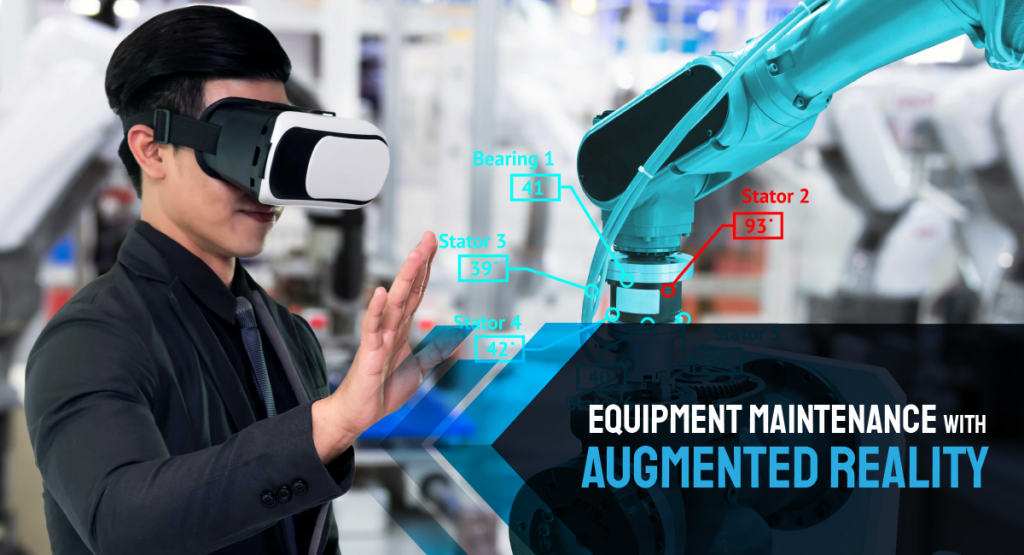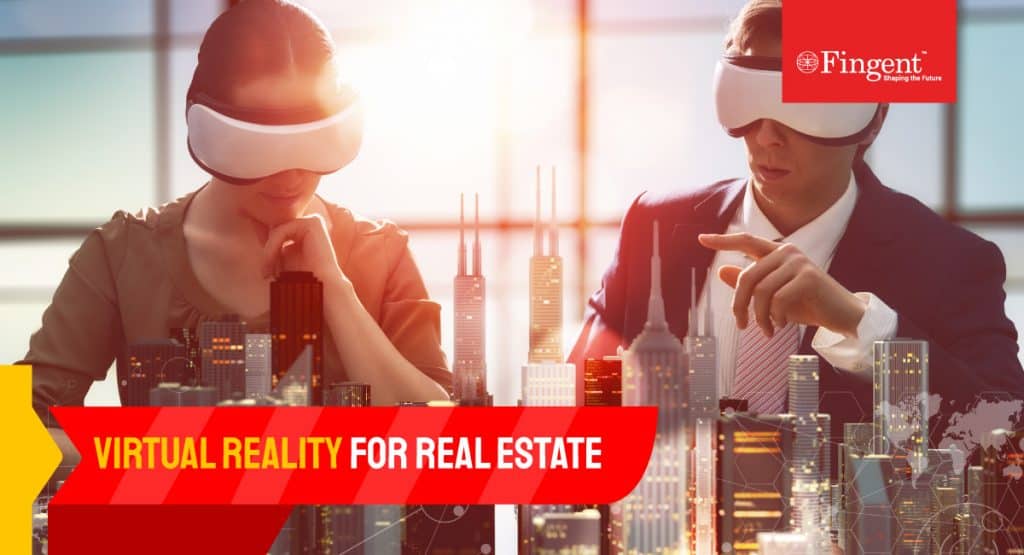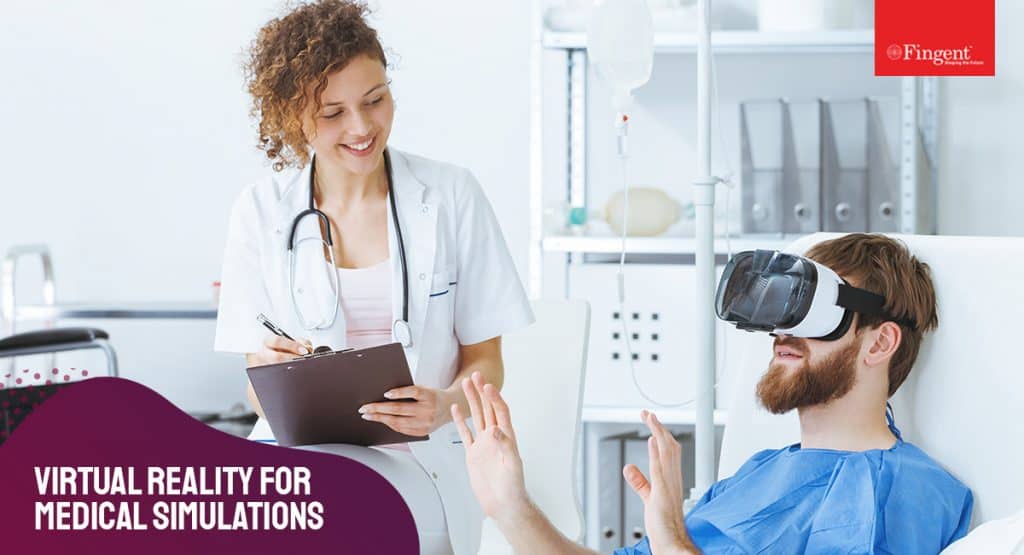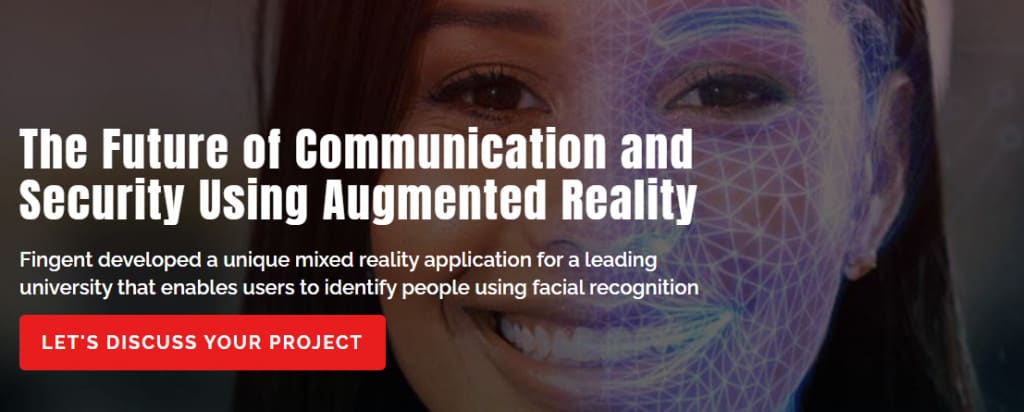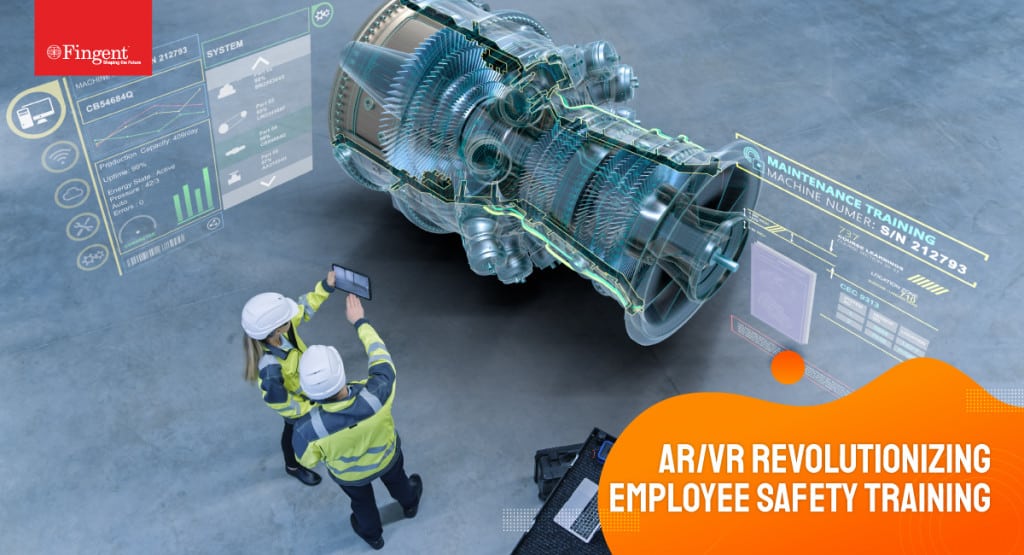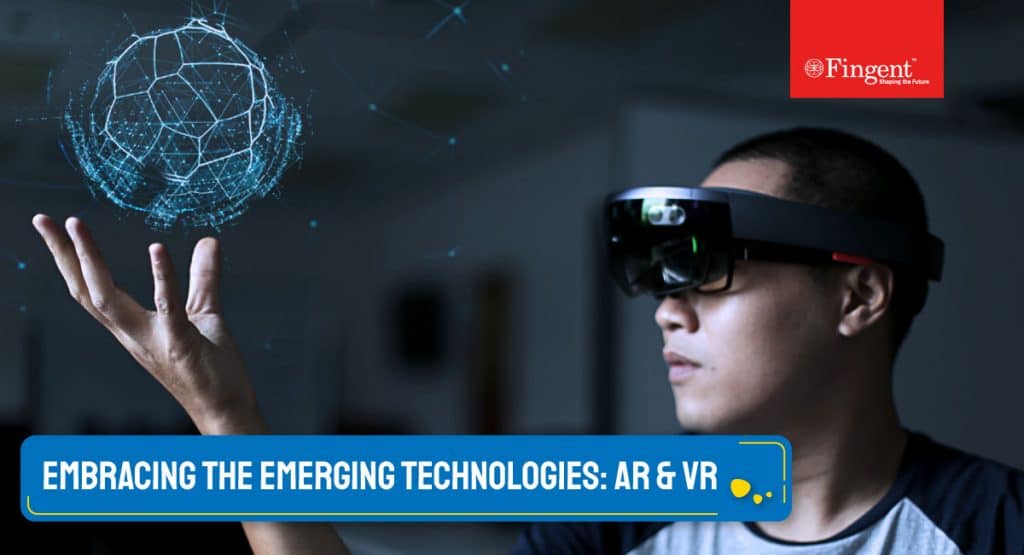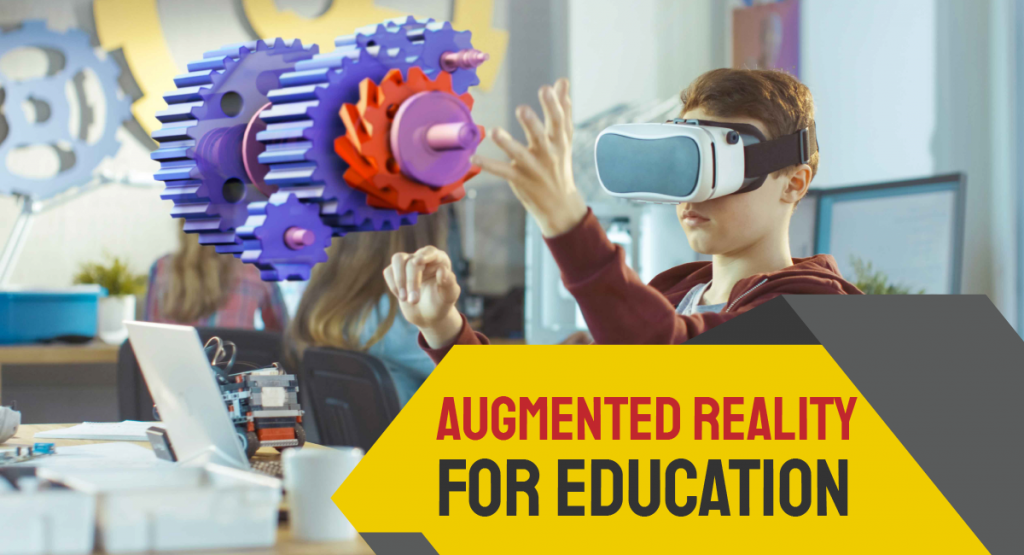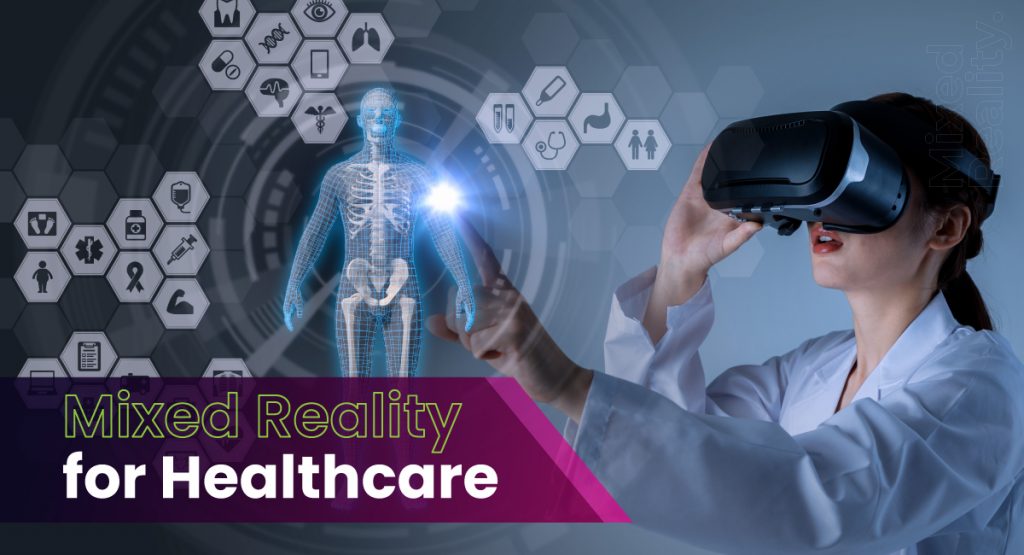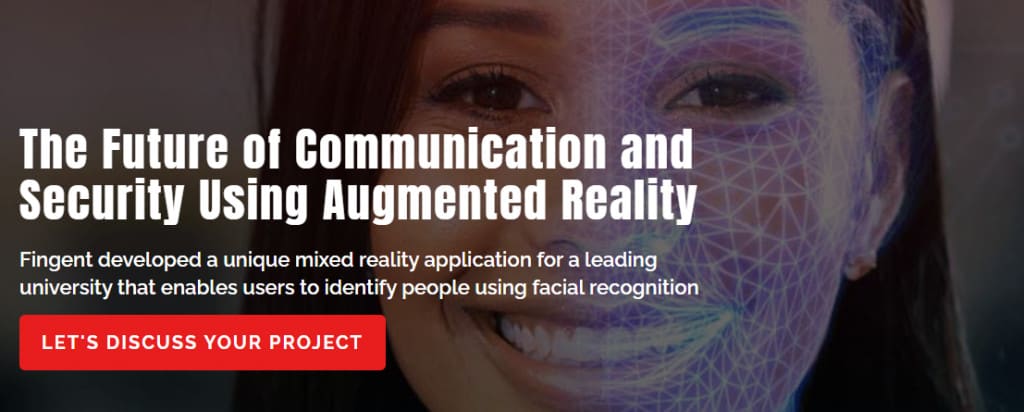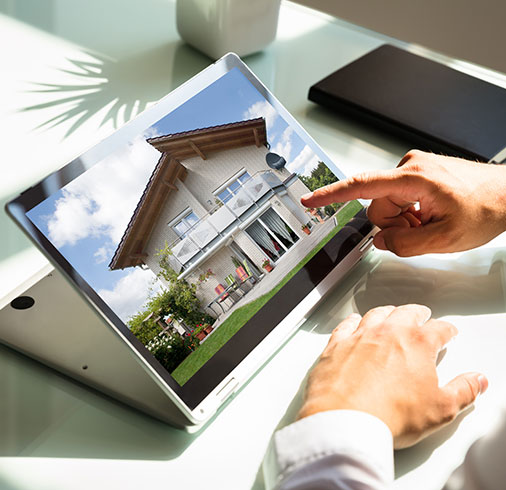Tag: Virtual reality
How Various Industries are Leveraging AR, VR, and MR Today?
Augmented Reality (AR), Virtual Reality(VR), and Mixed Reality (MR) may sound the same to many of us. But do you know that each one is different? AR, VR, and MR are different tech concepts with characteristics that differentiate each from one another.
Here’s what you need to know about each of the technologies, along with a few examples.
Augmented Reality
Augmented Reality uses computer vision along with mapping and depth tracking to show the appropriate content to the user. This functionality allows the cameras to collect, send and process the data to show the appropriate content to the user.
AR is designed for unrestricted movement while projecting images or other objects that you are looking at and enhances the user’s physical environment with contextually relevant digital content in real-time. A user can experience Augmented Reality with a smartphone or special hardware.
Watch Video: Augmented Reality in Education Transforms Learning Experience
Some of the interesting real-world examples of AR
1. AR in Gaming
Games like “Pokemon Go” project a Pokemon on your screen, on top of whatever your mobile camera focuses on. Augmented Reality has beautifully combined the real world with the favorite Pokemon characters.
2. AR in Medical Training
Augmented Reality is finding its virtue in medical training today. For example, students at the Cleveland Clinic, Case Western Reserve University are learning human anatomy using AR headsets or glasses. AR allows them to examine the human body without the need for dissecting cadavers or watching live operations.
Read more: How Augmented Reality in Healthcare is set to Transform the Industry in Future
3. AR in Retail
The retail sector also has been taking advantage of AR to help customers have a more enjoyable and interactive shopping experience. For example, Harley Davidson has developed a unique mobile app for its customers that allows them to view a motorcycle in-store using AR and customize it by adding accessories, changing paint jobs, etc.
IKEA, the leading retail conglomerate, has rolled out AR-powered retail apps that allow customers to “try on” clothing remotely before buying them online.
Read more: How Top Brands Embrace Augmented Reality to Offer Immersive Customer Experiences
4. AR in Manufacturing
Augmented Reality enables the manufacturing industry to gain a competitive edge by helping companies improve quality and productivity. Workers can get assistance from AR gadgets to save time, reduce errors and increase efficiency. Some of the world’s biggest brands like Boeing and General Electric are already using AR in their manufacturing processes.
Using AR glasses allows Boeing’s technicians to easily view the wiring renderings in the aircraft fuselage without external distractions.
Augmented Reality enables GE mechanics to be more productive as the technology offers them step-by-step instructions and visuals directly within their line of sight. They also get alerts in real-time through AR smart glasses so that they can inspect every step before moving on.
Read more: How Augmented Reality Simplifies Equipment Maintenance
Virtual Reality
Virtual Reality Environments (VREs) allow users to experience real-life scenarios via simulated counterparts and gain practical knowledge that would otherwise be difficult to comprehend in a real environment.
As the main focus of Virtual Reality is on simulating the vision, you will have to wear a VR headset such as Oculus Quest or HTC Vive Cosmos in front of your eyes that eliminates any interaction with the natural world (avoids distractions). Typically, two autofocus lenses are placed between the screen and the user’s eyes. The lenses adjust based on the individual eye movement and positioning. To render the visuals on the screen, you can use an HDMI cable connected to the PC or mobile phone.
Virtual Reality uses speakers, goggles, and even handheld wearables to simulate a real-world experience. You can also employ visual, audio, and touch simulation to create a more immersive reality.
A few real-life applications of VR
1. VR in Education
Virtual Reality can make learning more engaging and immersive. In addition to schools and universities, virtual experiences can help businesses train their staff. Currently, Unimersiv is offering VR educational content for institutions and companies.
Case Study: Using 360-degree VR simulations, the University of North Carolina offers an immersive campus touring experience to aspiring students. Download now!
2. VR in Real Estate
For years, real estate agents have used photos and graphic designs to showcase properties to prospective buyers. Today, Virtual Reality has transformed real estate property tours, making them more personalized, immersive, and close to reality. Being an immersive technology, VR enables potential buyers to experience a 3D walkthrough and understand better what each property has to offer even before scheduling a physical site visit.
For example, Sotheby’s, one of the world’s leading luxury realty brands, offers Virtual Reality home tours and videos to its clients. Potential buyers can view properties and spaces from the comfort of their homes using a web browser, or a smartphone, PC, laptop, or through a wearable headset.
Read more:How Virtual Reality can Transform Your Real Estate Business
3. VR in Marketing
VR is helping businesses reach out to their audiences by launching immersive and engaging marketing campaigns. With the COVID-19 pandemic compelling people to shop online and companies to transform digitally, Virtual Reality is gaining more popularity as it is helping people get a feel for products without leaving their homes.
For example, IKEA has introduced a VR app that enables users to experience kitchen remodeling. Using the VR Kitchen app, you can explore the virtual kitchen and interact with the objects using a VR headset.
4. VR in Healthcare
Virtual Reality helps doctors understand their patients’ needs better as it provides an in-depth look into human anatomy. Today, VR is extensively used in surgical training.
An educational project conducted by the University of New England (UNE) successfully used VR to teach empathy to medical and health profession students. The project used a VR tool called “Alfred Lab app” – to teach students about macular degeneration and hearing loss from a 74-year-old African American man’s perspective. Realizing an aged and ailing patient’s thoughts and concerns enables the residents to develop empathy towards such patients.
Read more: How Virtual Reality Improves the Standard of Medical Education and Training
5. VR in Travel and Hospitality
The travel industry is facing the hardest time ever in its history. However, vaccination rollouts on a global scale and international travel relaxations now give a fillip to travel, tourism, and hospitality. An early adopter of digitalization, the travel industry has already forayed into Virtual Reality. Travel businesses attract tourists and even promote holiday destinations through virtual staging and tours. Virtual Reality also allows people to explore the world virtually, especially those who cannot afford to travel.
Google StreetView is one of the best examples of how VR is being used in the travel industry. In addition to viewing panoramic images on a computer, it allows users to enable Google Cardboard mode for a Virtual Reality experience.
Mixed Reality
Mixed Reality, sometimes known as hybrid reality, combines the elements of both AR as well as VR. However, here the virtual content is not only overlaid on the actual environment but is fixed to and interacts with that environment. In simple terms, Mixed Reality lets you see virtual objects just like Augmented Reality, but these objects are capable of interacting with the real world. In simple words, Mixed Reality is more like immersive and interactive Augmented Reality.
MR is still in its nascent stages and may take time to create an impact like the other two technologies. One of the most remarkable Mixed Reality apparatuses is Microsoft’s HoloLens.
Opportunities provided by Mixed Reality
1. MR in Education
Mixed Reality allows students to see both the real world as well as the holograms. MR offers an immersive learning environment enabling students to understand better.
Case Study: Find how Fingent developed a unique Mixed Reality application for a leading university that enables users to identify people using facial recognition. Download Now!
2. MR in Manufacturing
Mixed Reality provides workers with real-time assistance, thereby facilitating manufacturing processes. The technology allows workers to see holographic instructions, so they know what to do. This minimizes human errors and improves quality significantly. Mixed Reality is also helpful for repairs and maintenance, especially in industries that require precision and expertise.
For example, Renault Trucks integrates Mixed Reality into its manufacturing process for enhancing engine quality control at one of its factories.
The blurring line between physical and virtual
While Virtual Reality takes you to the virtual world from wherever you are, Augmented Reality adds to the reality by projecting information on top of what you see. Mixed Reality combines both AR and VR. All these technologies, though powerful, are yet to make their mark with consumers. That said, they can completely change the way we use computing devices, gadgets, and technology in the future.
If you are eager to offer your customers immersive virtual experiences that surpass physical encounters, look no further than Fingent, a top custom software development company. Get in touch with us now!
Stay up to date on what's new

Featured Blogs
Stay up to date on
what's new



Talk To Our Experts
Top 5 Misconceptions about AR and VR in eLearning
In this tech-savvy era, computer-based realities are a new way to perceive a surrounding. Two of the most trending reality technologies are Augmented Reality (AR) and Virtual Reality (VR). Over the last few years, AR and VR have taken strides to become the most prominent consumer technologies. With developments in technology and broader accessibility, we started to discover more ways AR and VR can benefit various industries such as entertainment, automotive, transportation, oil & gas, aircraft, etc. AR and VR have helped many industries since their onset. Both technologies have a massive potential in immersive learning. The COVID-19 pandemic forced physical classrooms to go virtual globally. Since then, the education sector is witnessing the extensive application of reality technologies such as AR and VR to promote immersive learning.
Read more: How Virtual Reality Improves the Standards of Medical Education and Training
What is immersive learning?
Immersive learning refers to a learning strategy – a future training method – that uses an artificial or simulated environment that puts learners in a highly interactive learning environment. Augmented and virtual reality technologies play a crucial role in today’s immersive learning scenario by offering a new way of using an eLearning screen.
Role of AR and VR in eLearning
Augmented Reality or AR is an interactive experience that enhances or augments real-world objects and projects computer-generated images and animations into it – like Snapchat lenses, Pokémon Go (game), and so on. It overlays or adds digital elements or imagery –in the form of text, graphics, audio, and other visual extensions – to a live view. On the other hand, Virtual Reality or VR is a ‘computer generated’ experience created inside a simulated environment. It immerses the user in a replicated/imagined world using a head-mounted device (HMD), shutting down the physical world. With the help of special manipulators, users gain the potential of intuitive and multifunctional interaction with virtual elements in VR.
Read more: Top 7 Ways AR and VR Can Impact Employee Safety Training
Both the technologies create new and interactive experiences for users through their immersive environment and accessibility in 3-dimension. Especially in the eLearning industry – which is all about using advanced technologies such as AR VR in eLearning to enhance the learning experience – the alternate reality technologies AR and VR have been warmly accepted by modern learners because of the diverse benefits they offer. Few benefits include:
- Makes the learning more engaging and exciting
- Better online training mock-ups
- Makes learning a practical experience
- Customizes learning paths in courses
- Provides visual feedback in assessments with advanced learning analytics
Though AR and VR are trending immersive learning strategies, they are new in the Learning and Development space, and therefore, several myths are revolving around the topic. This blog will debunk five common AR and VR myths in eLearning.
Myth #1: AR and VR are the same
Many people believe that AR and VR are the same and can be used interchangeably. People often get confused between these two computer-based realities. Though both AR and VR play a massive role in immersive learning, the fact is that both these technologies have two entirely different concepts. Virtual Reality (VR) entails a complete immersion experience that displays a virtual environment to a person that blocks out the physical world by using a virtual opaque headset. At the same time, Augmented Reality (AR) adds digital elements or animations to the user’s real world using the camera on a smartphone.
Myth #2: AR and VR based apps are difficult to use
Even with an increasing number of users worldwide, some organizations still believe that AR/VR apps are more difficult to use than any other apps. This doesn’t seem right because such applications mainly meant for learning use high-end technology, making them more user-friendly. Skilled augmented/virtual reality developers ensure that the user interface is simply leading to the applications’ success perspective.
Read more: Accelerating AR/VR Adoption Among Customers
Myth #3: AR and VR are very expensive
Many organizations consider other training methods, as they believe learning through AR and VR is too expensive. When used right, AR and VR techniques can reduce costs and provide organizations with a high ROI in the long run. Many believe that VR apps can only be used with expensive gears and headsets. There are many affordable options and multiple authoring tools that businesses can consider to make AR and VR learning easy at a relatively low cost.
Myth #4: AR and VR are mainly for gaming and entertainment purposes
Because of the popularity gained by AR and VR with its practical use in the entertainment and gaming industry, people tend to think that AR and VR are primarily focused on these industries for entertainment purposes. But the fact is that AR and VR are not just limited to games. Though gaming and entertainment are the most prominent applications for computer-based realities, many industries embrace AR and VR in their marketing and advertising efforts, with widespread success.
Usage of AR/VR is trending in diverse sectors such as Manufacturing, Education, Event Management, Tourism, Automotive, Real Estate, Healthcare, Retail and E-commerce, Media and Entertainment, Defense and Military, and more. For instance, a global leader in medical imaging solutions, AccuVein uses AR to project an image of veins over skin for all medical imaging purposes.
Read more: Impact Of Augmented Reality In Education Industry
Myth #5: AR and VR may not stay for long
Many people say that AR and VR are just fads. The truth is that, as AR and VR offer many innovative ways to interact with the data around us and visualize it, reality technologies are expected to enrich users in the future years too.
Research & Markets reports that the global AR and VR market is projected to reach $1,274.4 billion in 2030, rising from $37.0 billion in 2019, and is predicted to progress at a robust CAGR of 42.9% during the forecast period (2020-2030). Key factors leading to the AR and VR market’s growth include the rising penetration of smartphones and tablet computers, increasing technology adoption among enterprises, and vendors’ surging focus on price reduction.
AR and VR lead among the emerging technologies and are being updated continuously. AR/VR development is a highly appreciated career today.
So, AR and VR are not fads and are going to stay for a long time.
Misconceptions are lifted for about every potential revolutionary technology, just like myths about AR and VR are prevalent in the mainstream now. AR and VR are emerging as crucial reality tech in 2021. Especially during this COVID-19 pandemic, which has turned our lives upside down, organizations need innovative eLearning techniques now more than ever. These computer-based realities can help enhance the learning experience more safely, engagingly, and productively.
Watch Video: How AR can be a powerful learning tool in the future
Fingent’s AR/ VR development team allows you to leverage the power of immersive learning with AR and VR and enjoy the experience! Contact us to know more.
Stay up to date on what's new

Featured Blogs
Stay up to date on
what's new



Talk To Our Experts
Medical Virtual Reality offers excellent opportunities for healthcare providers, practitioners, researchers, residents, patients, and chemists. Here’s a brief overview.
Virtual Reality: Increasing success rate and establishing trust in medical education
In 2013, the World Health Organization (WHO) estimated a shortage of approximately 7.2 million health care professionals worldwide. The report also stated that this shortage is expected to reach 12.9 million by 2035. Besides the deficiency and disproportionate distribution of healthcare workers, the inadequacy of training programs also affects the delivery of uniform healthcare services worldwide. Leading healthcare organizations have been focusing on developing strategies that can increase the number of healthcare workers and enhance the quality and relevance of medical training.
In recent years, several modes of eLearning have been used to disseminate information and impart training to medical students, out of which Virtual Reality Applications deserve a special mention. Virtual Reality Environments (VREs) allow users to experience real-life scenarios via simulated counterparts and gain practical knowledge that would otherwise be difficult to comprehend in a real environment.
Read more: Is Mixed Reality the Future of the Healthcare Industry?
Here are a few examples of how VR improves medical education standards and how it enables novice medical personnel to learn concepts in environments that replicate real-life scenarios.
1. Reduce stress and anxiety among medical students
Medical and traumatic emergencies can be daunting and stressful, especially for the early-career medical personnel. Preparing novice doctors to respond effectively to medical emergencies before being confronted with a real scenario is challenging. Unnatural or high-cost training modalities fail to replicate the stress and gravity of real-world trauma management realistically. Immersive virtual reality (IVR) may provide a unique training solution.
VR-based medical training recipients report better learning of anatomical positions, reduction in surgery time in the real environment, increase in the safety of both physician and patient, positive psychological effects on learners, reduction in training costs and efforts, and overall improvement. 68% of nursing and 58% of medical interns reported that VR-based training has significantly reduced their anxiety about occupational needlestick or sharp injuries (NSI) prevention.
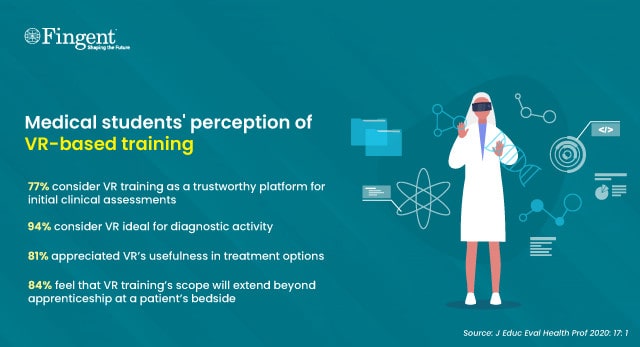
2. Ensure uninterrupted in-hospital training
During April-July 2020, when most countries went to stringent lockdown measures to curb the spread of the coronavirus, several medical colleges and universities adopted virtual reality to supplement the traditional in-hospital medical training. Due to in-hospital access bans, the training providers offered students virtual patient-based training, debriefing, and simulated clinical scenarios on a case-by-case basis, all via virtual reality environments.
A recent report on students’ perception of VR-based medical training found that:
- 77% of medical students considered VR training to be a trustworthy platform for initial clinical assessments
- 94% remarked that VR is ideal for diagnostic activity, and 81% appreciated its usefulness in treatment options
- Furthermore, 84% of students felt that the scope of VR training would move beyond apprenticeship at a patient’s bedside
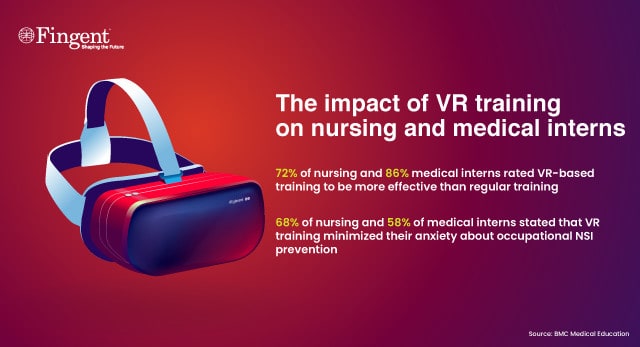
3. Immersive VR environments help develop empathy
The most significant advantage of virtual reality is that it allows users to experience any situation from any perspective. In that way, it can be called the “ultimate empathy machine.” Patients suffering from traumas such as memory loss, physical or mental abuse, age-related health issues, Alzheimer’s disease, drug addiction, and other ordeals need a soothing atmosphere and reassuring words to recover quickly. Immersive VR training is an effective teaching method to help medical students develop empathy towards such patients.
An educational project conducted by the University of New England (UNE) successfully used VR to teach empathy to medical and health profession students. The project used a VR tool called “Alfred Lab app” – to teach students about macular degeneration and hearing loss from a 74-year-old African American man’s perspective. Realizing an aged and ailing patient’s thoughts and concerns enables the residents to develop empathy towards such patients.
4. Improve practitioners’ skills, speed, and mobility in operating rooms
From rote memorization of theories, the modern medical training practice has evolved to imparting skills in life-like environments using virtual reality simulations. Even in the absence of faculty, VR systems enable students to learn practical surgical concepts when faced with a given patient. VR systems make medical training access more broad-based and flexible. Medical professionals can use VR to visualize the human body’s interior and learn better about human anatomy.
According to a study published by the Journal of Advances in Medical Education & Professionalism, the American Board of Internal Medicine (ABIM) has proclaimed that residents need to be trained by simulation tools before attempting any patient interventions in real life. The board also finds immersive VR training to be effective in mechanical ventilation and invasive hemodynamic monitoring.
Dr. Dimitris Stefanidis, professor and research scholar at Indiana University School of Medicine, concluded in a study that surgical residents who underwent training in laparoscopic suture using video simulators had reported improved operative performance, speed, and mobility at the end of the practice. Performing surgeries that require vast experience and sensitivity, such as an osteotomy (bone-cut surgery), can be simplified for surgeons through virtual simulations. Immersive simulations along with tactical feedback are safer and cost-effective than traditional teaching methods.
5. Impart health education and awareness among patients
In addition to practitioners, patients also can gain awareness of their medical conditions and treatment principles using VR. Clinical professionals can use simulated environments to communicate the impact of unpleasant lifestyle practices such as noxious drug usage, metabolic dysfunctions, obesity, growth of certain tumors, the effect of smoking and drinking on lung and liver functions, etc.
Chronically ailing and hospitalized patients can use VR goggles or headsets to experience their home in an immersive environment and chat with their family members. By installing a 360-degree camera in their home, the patient’s family can make sure that the patient experiences the interaction just like how he/she used to feel it while at home. During the COVID-19 pandemic, VR was highly applied in remote sites to facilitate telemedicine, control the spread of infection, plan, treat, and provide proper awareness to people regarding this disease.
Read more: The Application and Impact of Information Technology in Healthcare
Getting started with VR
Medical VR is no more a sci-fiction. VR-trained surgeons report a 230% boost in their overall performance compared to their traditionally-trained counterparts.
VR can help you conduct engaging medical conferences, help women get through labor pain, train surgeons and medical residents, reduce pain and anxiety among patients, and expedite recovery in physical therapy by tailoring exercises to patients’ therapeutic needs.
If your next question is how to start with VR, Fingent top custom software development company, helps you develop these virtual simulators:
- ACLS (Advanced Cardiac Life Support System)
- Accident Trauma Care Standard Operating Procedures
- Orthopedic or Cardiac surgical procedure that involves using complex tools
- Neo-Natal Resuscitation Simulator (GOLDEN MINUTE PROTOCOL)
Would you like to discuss that with our expert? Drop us a line, and a member of our team will get back to you shortly.
Stay up to date on what's new

Featured Blogs
Stay up to date on
what's new



Talk To Our Experts
How AR and VR augment employee safety training programs in industries
Employee Safety has taken on a new meaning as the world totters and tries to wrap its head around COVID-19. The pandemic spared no prisoners as it touched every aspect of our life, including our work and our businesses. It has changed the way people work and accomplish their jobs and altered the way employers look at employee safety training.
For starters, traditional employee safety training usually takes one of two forms: on-the-job and classroom learning, which might be a problem at this time. Fortunately, the latest training methods that feature immersive technologies such as Augmented Reality (AR) and Virtual Reality (VR) demonstrate their ability to close the current gaps in employee safety training. This blog discusses the impact AR/VR has on employee safety training. Before we discuss that, it is crucial to understand why businesses require augmented and virtual realities now.
Read more: How Augmented Reality Can Simplify Equipment Maintenance
The increasing significance of AR and VR in employee safety training
Adapting to the new normal, most employees will continue to work from home. Others will face new measures and procedures when they return to workplaces. It can pose a challenge to employers as they struggle to find new methods to train new employees while following physical constraints like social distancing.
Before we look at the solution, let’s have a look at a few drawbacks of the traditional classroom training:
Drawbacks of the conventional classroom training
– Ineffective training procedures
Usually, safety procedures are taught with a combination of computer testing and classroom exercises. These methods do not allow repetition training. It is good but not good enough because it lacks effectiveness and does not encourage knowledge retention. Besides, social distancing norms make it difficult to arrange for classroom training.
– Doesn’t engage employees
As traditional learning techniques are not imparted in a realistic environment, they do not simulate the hands-on experience in scenarios that are tough to be recreated. Classroom learning is often not a useful or engaging teaching style for workers who are in highly mechanical roles. With such training, employers cannot risk a technician to perform their jobs effectively and safely on day one.
– Classroom trainings are expensive
According to the 2019 training industry report, on average, companies spent 1,286 dollars in 2019. The same report also mentions that, on average, employees received 42.1 hours of training. It proves that traditional training methods and materials are a significant expense for financials and lost work time. Employers must look for newer ways to train their employees. Thankfully, AR and VR technologies help support employee safety training.
Read more: How Augmented Reality Is All Set to Transform the Workplace
Top 7 ways AR and VR impact employee safety training
Workplace injuries cost businesses more than 59 billion dollars per year. However, companies cannot cut back on employee safety training under any circumstances. In professions where inadequate safety procedures are a huge risk to the employee, employers must ensure that safety training is practical and accessible.
1. No more trial and error
Specific jobs, such as working in power plants or manufacturing units, require that employees be trained before assuming full responsibility. Augmented and virtual reality help make simulations that allow for training that is safe and free of consequences. Employers can create an exact simulation of their operations and enable new employees to practice repeatedly. Such training allows them to see and correct their mistakes before they start using the actual equipment.
2. Risk-free immersive training
AR and VR technologies allow instructional designers, animation engines, and game designers to combine fun with practical learning. It raises levels of engagement in trainees. Besides attractive and fun components, AR and VR appeal to learners because of the risk-free training element. It eliminates the need for employees and trainees to be in the same location during the training session.
3. Increased retention and skill acquisition
Practice is the best way employees can sharpen their skills. It is a well-known fact that we retain much more information when we combine learning with “doing.” Compared to discussions, reading, lectures, or even audio-visual learning, hands-on-practice is the best way to retain information. AR and VR technologies allow for such training that increases knowledge retention and skill acquisition. These technologies enable employees to practice the concepts they have learned immediately.
4. Allows self-paced learning
Each employee is different with varying levels of learning abilities. AR and VR allow each person to learn at their own pace. It means they can work on the same concept multiple times without the risk of injury to themselves or the machinery. This risk-free approach allows for self-paced learning and the ability to take the training until they master a particular concept.
5. Enhance the effectiveness of learning
Most employers have deemed it unsafe for their workers to share headsets to receive safety training in the current situation. Augmented and virtual reality allows employers to develop solutions where an employee can point his phone camera to a portion of the training manual that opens up additional materials or resources on his screen. This technique allows companies to train their employees about specific products, solutions, or services.
Read more: Impact Of Augmented Reality In Education Industry
6. Prepare employees for emergencies
Augmented and virtual reality are ideal for training employees to handle real-life situations. This technology is apt for safety training. It can minimize damage to the equipment and the cost of training. AR and VR allow firms to train employees to handle emergencies or real-time threats such as controlling a shooting situation.
7. Easy to customize training
Each organization and its requirements are different. Employees may encounter unique challenges and problems because of location, weather, or just the project’s complexity. AR and VR provide a considerable advantage in terms of flexibility and costs to offer company-specific training. It can accommodate a more tailored training experience.
The future of AR and VR in employee safety training
The safety risk is a real challenge that all industries face. Whether it is theft or operating potentially dangerous machinery, employees face risks, including physical hazards. Besides, the pandemic has necessitated a transition to a new way of life. There is currently a desperate need for new solutions that allow businesses to continue with some semblance of normalcy. AR and VR technologies provide organizations effective ways to train their employees while still preserving physical distancing norms. The use of augmented and virtual reality in employee safety training will become the new normal!
Want to explore how you can start with Augmented Reality and Virtual Reality technologies? Talk to us right away.
Stay up to date on what's new

Featured Blogs
Stay up to date on
what's new



Talk To Our Experts
Stay up to date on what's new

Featured Blogs
Stay up to date on
what's new



Talk To Our Experts
How we can expedite customers’ move to emerging tech like AR & VR
Many real-world scenarios have shown us the need to keep up with technology. The COVID-19 pandemic, for example, has proved to be an unanticipated catalyst in accelerating customers’ move to the new and emerging technologies and tools. As millions of consumers go into lockdown, they are forced to work from home that impacts their day to day habits of digital connectivity.
Though COVID-19 has created a major drag on the world economy, it is playing an active role in accelerating the development and commercialization of several emerging technologies such as Augmented Reality (AR) and Virtual Reality (VR). This is especially true for innovations that automate processes, reduce human-to-human contact, and increase productivity during social distancing. This article examines how new technologies such as AR/VR can influence various industries.
Wholehearted Support for Virtual Health Care
In a survey conducted by Perkins Coie LLP, a vast majority of the respondents found healthcare and medical devices as one of the top potential growth areas for AR and VR technologies.
Telemedicine had previously not received enough support from healthcare providers, financers, and patients. But now, the need for virtual healthcare advice is accelerating the adoption of telemedicine. Various countries have authorized their healthcare professionals to expand telehealth consultations to make it easier for patients to speak with their healthcare providers.
This pandemic is also spurring the interest in asynchronous healthcare, a form of telemedicine that eliminates the need for face-to-face appointments in managing and monitoring chronic health conditions. New technologies in AR/VR allows a healthcare provider to remotely assess and diagnose a patient in an ambulance two miles away.
Related Reading: Is Mixed Reality the Future of the Healthcare Industry?
Promising future for the Real Estate Industry
Though the present scenario has stirred unrest in certain industries, the real estate sector need not come to a standstill at this time. The use of AR/VR technologies can facilitate communication and collaboration within the industry. As a useful tool for design communication, AR/VR has the ability to ensure virtual co-location of the teams making it possible to transfer messages and work cultures.
The new tech line (AR and VR) allows all project stakeholders to take a ‘walk’ inside the project before it is built. Such an understanding of project data can reduce errors, facilitate faster and better decision-making, and achieve greater business and profitability. In this period when physical mock-ups and on-site prototyping are no longer viable, VR-enabled online libraries can add accuracy to design projects without additional cost.
Related Reading: Augmented Reality & Virtual Reality: Transforming The Real Estate Industry
Use Chatbots Instead of Human Punching Bags
The COVID-19 pandemic has induced changes in customer behavior and business models, which might persist well after the crisis abates. Meanwhile, chatbots can be used to reduce the surge in customer frustration. Various websites are using chatbots to answer general FAQs asked by the customers providing them a better customer experience.
AI-powered chatbots can communicate with humans in real-time. Such personalized chatbots can be developed for your websites, social media profiles, and SMS services to generate automated responses using pre-defined keywords and categories. COVID-19 has complicated the role of the customer service representative. They have to lead the delicate dance of balancing policy and empathy with frustrated customers.
Read our case study: Using Chatbots to Create an Enhanced and Engaging Learning Experience
Chatbots provide proactive customer service and help protect the emotional well-being of the agents. Onboarding and training new customer service representatives are not viable options when the work volume increases. Chatbots allow you to scale-up teams and multiply output within seconds. Additionally, now chatbots can be used effectively to sell products directly to users via WhatsApp (WhatsApp for Business).
Powerful Cutting-Edge Technology: Face-Recognition
In the span of a few weeks, COVID-19 has reshaped how the world works. This new paradigm has opened the door to the deployment of latest technologies such as facial recognition. During this period of social distancing, business and government agencies are increasingly turning to facial recognition technology. Also, face recognition payments are growing in popularity.
Read our case study: The Future of Communication and Security Using Augmented Reality
Grand View Research, Inc. forecasts that by 2027, the worldwide facial recognition market will increase at a CAGR of 14.5 percent to reach 9.93 billion dollars.
Face recognition is already getting a lot of momentum since it avoids touching surfaces and potential infection. Another benefit to face recognition is that it can enable thermal scanning to check body temperatures, minimizing the risk of the sick infecting other workers.
The Race To Keep Pace
Today the globalized economy is in fierce competition. Technology helps increase efficiency across industries especially during this pandemic. That is why AR/VR is emerging as a critical solution. From accelerating user collaboration to streamlining processes, the use cases of AR/VR technologies in business will only get stronger. And as IT infrastructure increases in complexity, these new technologies will deliver multiple benefits to businesses as a whole.
Fingent top custom software development company, helps accelerate your move to new and emerging technologies such as Augmented Reality, Virtual Reality, and Mixed Reality. Get in touch with us to find out how we help our clients deliver a compelling reality experience using these technologies.
Stay up to date on what's new

Featured Blogs
Stay up to date on
what's new



Talk To Our Experts
Why Implement Virtual Reality in your Real Estate Business
Virtual Reality is rapidly becoming a part of every modern business, and the real estate industry is not excluded from the list. In fact, VR technology opens up many innovative opportunities for real estate businesses to market their listings in a better way.
Generally, a real estate deal involves checking the listings, price negotiations, and an in-person visit to the property. This workflow is very robust and has always brought forth good results. However, it is very time-consuming for both the client and the realtor. Sometimes, visiting the property can be inconvenient for the homebuyers as well. This is where Virtual Reality tools can be a game-changer.
Related Reading: Augmented Reality & Virtual Reality: Transforming The Real Estate Industry
Virtual Tours
VR technology allows realtors to showcase the property to their clients as if they were there in the flesh. The client just has to put on a VR headset and experience an immersive three-dimensional tour of the property. Potential homebuyers can virtually visit multiple properties this way, even without having to leave their home once. This allows them to make an informed decision when buying or renting the property.
As for the real estate companies, employing VR tools allows them to expand their reach to more clients. As the internet is not confined to any physical boundaries or borders, realtors can offer their listings to global clients as well. This can be of great help to long-distance buyers as well as to those who are looking to migrate to a different country.
Realtors can also offer a 360-degree virtual tour of the property for clients who do not have access to a VR headset. Alternatively, they can create an interactive virtual tour, wherein the user can move from one place to another within the property by clicking on various hotspots. Both of the guided and interactive virtual tours can be easily included along with the property listing on the website.
Virtual Staging
Virtual Reality also allows realtors to add furniture and other essential items in the property so that it looks more appealing and cozy to the clients. Staging has been an integral part of the real estate business for years and is widely used when uploading photos of the property on the website. VR technology can make this more realistic.
Virtual staging is one of the best ways to market a newly built home or apartment. This can be done by creating 3D tours of the property with furniture and fixtures. That makes it very simple for the client to visualize how their future personal space will be. As this connects potential buyers to the property emotionally, it motivates them to make a quick decision.
Real estate businesses can also employ VR technology to boost the sales of under-construction properties using virtual staging. Realtors find it very difficult to market such properties because empty buildings and unfinished structures do not attract buyers at all. This gap can be efficiently filled using architectural 3D visualization and virtual staging tools.
Virtual Commerce
Virtual staging of the property has another benefit too. Apart from creating a premium and lasting impression on the potential buyers, it can also promote virtual commerce. Realtors can easily add a purchase option with any element when staging the property and creating the 3D tour. This allows the clients to customize the space as per their personal preferences.
For instance, real estate businesses can integrate an online store with the staged elements. This will give the clients the options to, say, change the style of the furniture or choose a different light fixture. This not only makes the virtual tour of the property more interactive but also allows customers to imagine how it will be when they move in.
Even if a client does not make any changes to the interior staging during the virtual tour of the property, there are still chances that they may find the items included in the 3D tour interesting and may buy them eventually when they buy or rent the property. This is always an added advantage for the realtor.
Related Reading: Tech Disruptors in the Real Estate Space
The Key Benefits of Employing VR Tools in Real Estate Business
The most striking advantage of incorporating Virtual Reality in real estate business is that it saves time for both the realtor and the client. It is much cost-effective than taking the client to check out multiple properties.
Besides, an immersive 3D virtual tour of all the properties listed on the website will be available round-the-clock to the clients, which means that they can virtually visit any property at any time. This allows realtors to work with more clients, which means more opportunities to sell a property.
Another great thing about VR technology is that it gives clients an instant sense of ownership. As they get the options to customize the space as per their liking during the virtual tour, checking out the different areas of the property quickly establishes a personal connection with the clients.
This can be very helpful in inspiring them to make a purchase or sign a rental agreement. It is also possible to add to the customer experience by including interactive tools in the virtual tour, such as mortgage calculators and neighborhood descriptions.
There is no arguing that Virtual Reality has already made an impact in the real estate industry. Most of the big names have adopted the technology for improving their reach, and soon, every real estate business will incorporate VR technology for better productivity.
If you would like to work with an expert to build your VR strategy, we custom software development experts can help you. Contact us.
Stay up to date on what's new

Featured Blogs
Stay up to date on
what's new



Talk To Our Experts
CX Solution to Improve Retail Growth
Nurturing communities and building loyalties is now more critical than ever for all retail brands. With instant access to the latest trends and technologies, customers demand better experiences in their interactions with retail brands across all touchpoints. Hence, Customer experience (CX) has become the most important facet of the retail marketing strategy. Retailers, therefore, have to focus on improving CX through every channel.
Importance of CX solutions
Companies can leverage authentic data and modern technology to transform customer experiences and positively impact their business’ future. While most organizations do have systems in place to track the performances of their CX strategies, few track the end-to-end customer journey. Using appropriate CX solutions, organizations can bridge the gap between expected and actual experiences. CX solutions help companies measure and understand the impact of their CX management strategies.
By employing CX solutions, you can manage the interactions that current and potential customers can have with your brand, thus enabling you to meet or exceed their expectations. CX solutions leverage customer interactions to align the brand image according to the customer’s perceptions. This helps you foster strong and long term customer relationships.
Related Reading: 5 Ways to Enrich Customer Experience at Your Retail Store
Top Trends in CX
Staying abreast of the latest technologies and trends in Customer Experience will help you stay ahead of the competition. It’s time to hone your CX strategies by following these latest trends that rule the CX market.
- Omni-channel CX: Customer journeys have become more dynamic than ever. Based on convenience, customers constantly switch mediums. Since the line between physical and digital channels are blurring, customers expect seamless experiences in their interactions across all channels. It’s important for retailers to strike a proper balance between the “traditional” and “online” business models based on their customers’ preferences. Adopting omnichannel customer care strategies will help resolve complex issues quickly.
- Artificial Intelligence: CX enhancement requires comprehending vast amounts of chaotic and complex data in real-time at high speeds. This scenario is most suitable for AI-powered solutions. Using AI, you can replicate human-like engagements (chatbots for example), track customer-behavior and roll out customized campaigns on their preferred channel of operation. Thus you turn your data into valuable customer insights.
- Hyper personalization: Customers expect high levels of personalization and prefer to buy from brands that offer services/products that are fine-tuned according to their requirements. With a hyper-personalized approach, retailers can identify subtle customer traits and deliver highly targeted and relevant services. To develop this level of hyper-personalization, your data and analytics have to be aligned to paint a clear picture of your customers’ choices.
- AR/VR: Augmented Reality (AR) and Virtual Reality (VR) technologies are touted as the “technologies of the future” since they provide highly immersive and engaging customer experiences. AR and VR provide customers with a hands-on experience which helps them make better choices. Many retailers are already reaping the benefits of implementing these futuristic technologies. For instance, Ikea allows customers to check how the furniture would look in their homes before buying using AR. Famous clothing brand Marks and Spencer uses virtual try-on mirrors to boost their store experiences.
- Virtual assistants and chatbots: Virtual assistants and chatbots enable companies to deliver faster and more efficient services at low costs. Some may argue that chatbots lack empathy and hence cannot replace human customer service representatives. However, you should not overlook the fact that advances in AI have given bots the ability to decipher human emotions. By combining the technologies of a virtual assistant and chatbots, you can provide your customers with personalized and empathetic experiences.
Related Reading: Capitalizing on AI Chatbots Will Redefine Your Business: Here’s How
Future of CX
Customer Experience will continue to be crucial for brands to survive in a disruptive business environment. Retailers need to adopt agile models to retain customers and attract new ones. Going forward, CX will also depend on employee experiences. If your employees are empowered, they will in turn care for your customers. Your interactions, both with your customers as well as your employees across all channels need to be more meaningful and effective.
https://www.fingent.com/insights/portfolio/smart-product-ordering-system/
Gartner states that 64% of consumers give more importance to their experiences with a brand than to the price of a product or service. Fingent helps you implement the latest technological advancements to make your CX strategies fruitful. Contact us to know more.
Stay up to date on what's new

Featured Blogs
Stay up to date on
what's new



Talk To Our Experts
How Extended Reality Is Transforming Business Environments?
Picture yourself diving into crystal-clear Grecian waters or taking a walk on the moon, all the while sitting in the comfort of your home. As fantastical as this may seem now, Extended Reality is making this possible as we speak. What is Extended reality and what are its powerful real-world applications? Let’s check.
Understanding What Extended Reality Is
Extended Reality is a blanket term that encompasses all virtual and real environments generated by computer technology. This includes components such as Virtual Reality, Augmented Reality, and Mixed Reality. Extended Reality is poised to completely revamp the way businesses interact with the media and has the potential to allow seamless interaction between the real and virtual worlds allowing its users to have a completely immersive experience.
Three Remarkable Components of Extended Reality
These components fall under the category of immersive technologies that can affect our perceptions. Here is a little bit about them:
Virtual reality: Virtual reality transposes its users to a different setting through a simulated digital experience. It makes use of a head-mounted display (HMD) to create an immersive experience by simulating as many experiences as possible. Virtual reality app development has witnessed significant adoption in industries like healthcare and real estate.
Augmented reality: Augmented reality services have emerged as a powerful tool in various industries, including healthcare and real estate. With the development of augmented reality apps, businesses can enhance user experiences by overlaying digital elements onto the real world. This technology offers exciting opportunities for immersive and interactive interactions, transforming the way we perceive and interact with our surroundings.
Mixed reality: Being the most recent advancement among reality technologies, mixed reality is experienced through mixed reality glasses or headsets where you can interact with physical and digital objects in real-time.
Related Reading: Augmented Reality Vs. Virtual Reality – The Future Technology
The implementation of these technologies through extended reality is enabling businesses to create innovative solutions and increase customer engagement, reduce human error and improve time efficiency.
5 Powerful Real-World Applications of Extended Reality
“The market for Extended Reality is expected to have a compound annual growth rate of more than 65% during the forecast period of 2019-2024,” says Mordor Intelligence.
Check out these five real-world applications of extended reality:
1. Entertainment and Gaming
The entertainment and video games industries are the foremost users of Extended Reality. Camera tracking and real-time rendering are combined to create an immersive virtual environment, allowing actors to get the real feel of the scene, thereby improving their performance. The extended reality also allows for multipurpose studio environments, thus reducing the cost of an elaborate movie set.
Video gaming is enhanced by the ability of Extended Reality to create a comprehensive participation effect. This allows users to dive into a completely different reality. Other entertainment events such as exhibitions and live music can also be enhanced by the capabilities of Extended Reality.
2. Employees and Consumers
- Training: Extended Reality allows employees to be trained and educated in low-risk, virtual environments. Medical students, surgeons, firefighters, pilots, and chemists can closely simulate risky scenarios with minimal risk and less expense. The experience they gain will prove invaluable when they handle real-life situations.
- Information: Replacing physical manuals, Extended Reality can enable technicians to focus on the task without having to flip the pages of a manual. It can even connect an expert remotely to the real-time issue for his expert advice. This would save organizations a whole lot of money, and more importantly save them valuable downtime as they wouldn’t need to wait for experts.
- Improve customer perspective: Simulating virtual experience brought on by specific diseases and impairments can help doctors and caregivers receive empathy training.
Related Reading: How Top Brands Embrace Augmented Reality for Immersive Customer Experiences
3. Healthcare
Extended Reality is improving healthcare by streamlining medical procedures while enhancing patient care. Allowing surgeons to visualize the complexities of the organs in 3D, it is enabling them to plan each step of a complicated surgery well in advance. Essentially, it is ensuring that surgeons can perform surgeries in a more safe, effective and precise way.
4. Real Estate
Extended Reality makes it easier for real estate agents and managers to close a deal by enabling prospective homebuyers to get a real feel of the property. The layout scenarios that are enabled by Extended Reality enhance customer experience while providing strong business opportunities.
Related Reading: AR and VR- Game Changers of Real Estate Industry
5. Marketing
Extended Reality enables marketers to give their consumers a ‘try before you buy’ experience. It allows consumers to be transported to a place, immerses them in that world and motivates them to explore it. As an example, Cathay Pacific used a 360◦ video with hotspots to help potential customers experience the brand firsthand. That increased customer awareness by 29% and brand favorability by 25%.
Face the Future with Extended Reality
There are many more advancements and applications to be discovered with Extended Reality, and it is soon going to be imperative to competitive advantage. Don’t let your business fall behind. Consult with Fingent, a top custom software development company, today and ensure you stay ahead of the curve.
Stay up to date on what's new

Featured Blogs
Stay up to date on
what's new



Talk To Our Experts
What Is Augmented Reality?
Do you fancy playing Nintendo’s game Pokemon Go? Or used the IKEA mobile application? These are 2 examples of how Augmented Reality technology has taken over the digital world to heights.
The much-hyped AR technology has had a technological breakthrough in recent years and has witnessed many innovations. Snapchat Lenses are yet another example of AR technology implementation. AR keeps the real-world focus. It adds virtual elements to improve the user’s experience.
The AR technology superimposes a CG (Computer Generated) image of the real world for the user. For instance, the Pokemon Go game provided its users with superimposed images, allowing the users to catch Pokemon simply by looking at their smartphones. The game had 65 million users as it gained popularity.
What Is Virtual Reality?
If you have used VR devices such as Play Station VR (PSVR), you would understand how Virtual Reality technology completely provides an immersive experience by completely shutting you off from the rest of the world.
VR technology is a display technology to create a simulated environment for the user. The key players in VR technology include Oculus Rift, HTC Vive, and so on.
Augmented Reality And Virtual Reality: Game-Changer For The Real Estate Industries
AR and VR technology has seen immense growth in recent years and is continuing to grow rapidly. According to recent Statista reports, by the year 2025, the total revenue in the VR/AR industry is estimated to be $2.6 billion.
Initially, the real estate sector has been using 3D Video and 3D Photography for creative interactions with their clients. They used to portray this technology for showing their clients the interiors of the buildings etc. Virtual reality, thus enhanced the viewing experience for the clients of real estate builders and agents, without the viewers having to visit the premises physically.
From helping the construction industry to market, improve and maintain sites to train the workforce on security, Virtual Reality is a game-changer for the real estate industry! Let us see how:
Why The Real Estate Sector Needs AR And VR Technology Implementation
Virtual and Augmented Realities are Immersive Technologies that can create a new reality altogether by leveraging the 360 space. These technologies save time and expenditure significantly for buyers, sellers, agents, etc. Technological advancements have contributed to the increased use of immersive UX (User Experiences), thus easing the process of selling and/ or buying residential and commercial real estates. Implementing these advanced technologies in Real Estate will ease both buying and selling of properties.
Related Reading: Check out how real estate technology helps predict property prices
AR And VR Technologies: Benefits In The Real Estate Industry
A recent survey by the National Association Of Realtors stated that 95% of users search the Internet before buying a property. The major benefits that can be leveraged out of AR technology are as follows:
1. Better Clarity Over Properties
Augmented Reality technology makes everything real and interactive with its ability to carry blueprints and images in real-time. AR mobile applications offer users a visual walk through the properties.
2. Cost-effectiveness
AR replaces traditional marketing techniques offered by realtors to reach out to potential buyers. In addition to saving cost overheads, AR technology improves brand loyalty as well.
3. A Better Reach-Out Platform
An AR mobile application on your smartphone offers a better reach-out than having to physically be present in worksites.
4. Offers A Global Reach
With VR, arranging virtual visits, showing users the properties virtually, and negotiating costs with the users are made easy, even to long distance buyers.
Related Reading: Check out how smart home technology is creating an impact on real estate.
AR/VR technologies allow users to refine searches and avoid unproductive visits to any property. Let us walk through the key benefits that the technology of Virtual Reality has to offer:
5. Virtual Visits
VR technology allows people to visit properties virtually which not only saves cost but time as well. Putting on a VR headset, users get an immersive experience by having 3D walk-throughs of properties. There are 2 types of 3D virtual tours. They are as follows:
- Guided Visits – These are for existing properties that lets you capture a 360-degree video. Users can wear a VR headset or a gadget such as Google Cardboard to view the properties. This does not require any programming or complex rendering.
- Interactive Visits – Users can decide where to move within the property, by choosing specific hotspots in their field of view.
6. Virtual Staging
According to the statistical report by the National Association Of Realtors, 77% of real estate agents prefer to use virtual staging to help potential buyers to associate with a property they intend to buy. VR technology helps realtors to market-specific staged properties with minimal investment.
With the advent of technology, 3D tools are used to create a virtual representation of spaces with required furnishings. For this, the 3D photographs are taken and further staged with the help of a 3D scanner.
7. Visualizing Architecture
Architectural Visualization has become immersive with the advent of VR technology. Potential buyers can imagine how their future properties will look like. The 3-dimensional computer-generated environment helps realtors create full-scale models of buildings and properties. VR technology thus helps in pushing thresholds without the risks associated with time and costs.
8. Efficient Communication With Tenants
3-dimensional tours in real-time with tenants can help landlords and real estate agents communicate with their tenants effectively. The VR technology is found to be more efficient and productive in case of vacation rentals especially. This is because businesses that offer short vacation rentals have high turnover rates associated with it, compared to others.
9. Virtual Commerce
According to a recent eCommerce statistic report, 77.24% of potential buyers who intend to buy online, abandon their idea of purchasing. This shows a lack of convincing customers to go ahead with their initial choices. Virtual Reality technology finds use in these situations with its immersive capability.
With the mobility element of the VR technology, around 24 million VR devices were estimated to be sold globally, according to insights from CSS.
With VR technology, after taking a virtual tour of the property, users can order from the virtual store as well.
Related Reading: Read on to know What Not To Do In Real Estate Business.
AR And VR Technologies – Future Game-Changer For The Real Estate Industry?
Immersive AR and VR technologies provide users the benefit of Analytics. This feature allows realtors to now derive critical insights and enhance the buying decisions of potential customers.
Providers of Analytics can offer web-page related KPIs (Key Performance Indicators). This includes page views and web sessions. Nuanced buyer behaviors can be better judged with data analytics.
To conclude, AR and VR technologies reduce unnecessary expenditures associated with staging and scheduling visits. It helps users visualize properties and reduces the overall costs.
Use of VR to support USA smart cities are forecasted to reach $330 million by the year 2024.
AR and VR technology is surely the next big technological breakthrough in the real estate industries. For more insights on how to transform your real estate business digitally with immersive technologies, call our strategists right away!
Stay up to date on what's new

Featured Blogs
Stay up to date on
what's new



